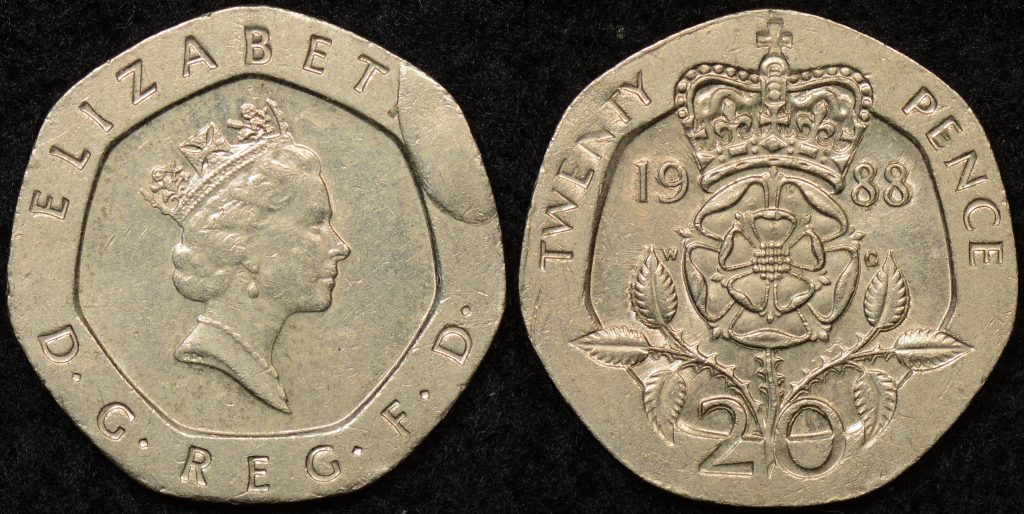Having been in and around error collecting for 15 years I often see the new error collector lusting after spectacular errors or varieties that are worth many hundreds or thousands of dollars. The unfortunate reality is that not all of us have large collecting budgets and we must derive satisfaction from error or variety coins that can be obtained less expensively. Figure 1 shows just such a coin. It’s a Great Britain 20 pence dated 1988 and the observant among you might note that the obverse has a large blob on the upper right quadrant of the obverse. I found this coin recently in a bag of UK currency that passed over our counter. Despite handling many thousands of coins each week I still got a thrill when I found it. When I stop getting that thrill I know it will be time to give this game away!
The blob on the rim is known as a “rim cud”. This occurred because the obverse die actually fractured and part of the design flaked away. When a coin was struck after the die had broken the metal of the planchet filled the broken area forming the cud as shown. Of course the metal that fills the cud has to come from somewhere and in the case of large cuds like this one there is usually strike weakness on the opposite side of the coin. If we consider the reverse of the coin in the upper left quadrant we can clearly see weakness in the NT of TWENTY. This area of weakness is directly opposite the obverse rim cud.
Once the die has broken every coin struck displays a rim cud in the same area. In some cases the die may continue to deteriorate and the cud actually grows and changes shape. This is known as die progression and it can be an interesting exercise to hunt out rim cuds as they grow and change shape. Personally I find this pursuit of cud progression to be especially satisfying as you know that each coin was struck with the same die pair! It’s satisfying because being able to nail down two different coins from a mintage of many millions to the same die pair is usually very difficult to do.
It’s worth talking quickly about the nomenclature of “rim cud”. There is no certain origin of the word “cud” but some suggest it stands for “Coin Under Development”. I find this nonsensical and doubt it to be true. What is certain is that generally numismatists agree on the distinction between a “cud” and a “die chip”. A “cud” is a die break that involves the shank or edge of the coin die. In contrast, a “die chip” is a die break that does NOT involve the shank or edge of the coin die and is in the middle area of the die somewhere. Those familiar with the Australian “rabbit ear” dollars should know that the so-called “rabbit ears” are not cuds, but die chips.
A version of this article was originally published in the free online coin mazazine, Independent Coin News.


